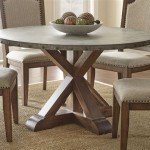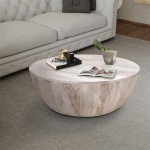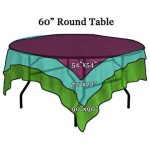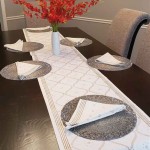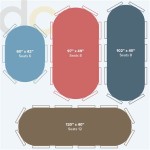```html
How To Put Runner On Table
A table runner is a decorative length of fabric that is placed on top of a dining table, coffee table, or console table. They serve both aesthetic and functional purposes, enhancing the visual appeal of the table while also protecting the table surface from scratches, spills, and heat damage. Knowing how to properly place a table runner is essential for achieving a polished and sophisticated look for any occasion, from casual family meals to formal dinner parties. The following article outlines the different considerations and techniques involved in selecting and positioning a table runner effectively.
Choosing the Right Table Runner
Selecting the appropriate table runner involves considering several factors, including the table size and shape, the desired style, the occasion, and the existing décor. The size of the runner is paramount, as it dictates how it will drape and complement the table. Ideally, the runner should extend beyond the edges of the table, creating a visually appealing overhang.
For a standard rectangular or oval table, a runner should typically extend 6-12 inches beyond each end. This overhang allows the fabric to drape gracefully and provides a balanced look. To calculate the ideal runner length, measure the length of the table and add 12-24 inches. The width of the runner can vary depending on the table size and personal preference, but a common width range is between 12 and 18 inches.
For square or round tables, the runner can be placed in several ways. A runner can be placed across the center of the table, similar to a rectangular table. Alternatively, two runners can be placed perpendicular to each other, creating a cross shape in the center of the table. This arrangement works particularly well with square tables. A round table can also accommodate a shorter, round runner placed in the center to highlight a centerpiece.
The material of the table runner should also be considered. Different fabrics offer different textures, patterns, and levels of formality. Linen and cotton runners offer a casual and natural look, suitable for everyday use or informal gatherings. Silk and velvet runners exude elegance and sophistication, making them ideal for formal occasions. Synthetic fabrics like polyester are durable and easy to care for, making them a practical choice for households with children or frequent use. The runner's color and pattern should complement the existing décor and the occasion. Neutral colors like beige, gray, and white offer versatility and can be easily paired with different tableware and accessories. Bold colors and patterns can add a pop of visual interest and create a festive atmosphere. Seasonal themes can also be incorporated through the use of appropriate colors and patterns.
Methods for Placing a Table Runner
The placement of a table runner significantly impacts the overall aesthetic of the table setting. There are several common methods for positioning a runner, each suitable for different table shapes, sizes, and occasions. The most common methods include:
Center Placement: This is the most straightforward and versatile method. The runner is placed lengthwise down the center of the table, ensuring it is centered between the edges. This method works well for rectangular, oval, and square tables. The overhang should be equal on both ends for a balanced look. This placement is ideal for highlighting a centerpiece or creating a focal point in the center of the table. When using this method, ensure the runner lies flat and smooth, free from wrinkles or creases.
Perpendicular Placement: This method involves placing two runners perpendicular to each other, forming a cross shape in the center of the table. This works particularly well with square tables and can create a visually interesting and symmetrical arrangement. One runner is placed lengthwise, while the other is placed widthwise, intersecting in the middle. The intersecting point should be centered on the table. This method can also be adapted for rectangular tables by using a shorter runner placed across the width of the table at each end, creating defined spaces for individual place settings.
Layered Placement: This method involves placing the runner on top of a tablecloth. This adds depth and texture to the table setting. The tablecloth should be a neutral color to allow the runner to stand out. The runner can be placed lengthwise down the center of the table, or it can be placed diagonally across the tablecloth for a more modern and dynamic look. The layered approach provides an opportunity to incorporate different textures and patterns, creating a visually rich and elegant table setting.
Individual Placement: In some cases, particularly at larger gatherings, shorter runners can be placed underneath each place setting. This method is useful for defining individual seating areas and creating a cohesive look across the entire table. These shorter runners function more like placemats and should be appropriately sized to fit comfortably beneath the plate, cutlery, and glassware for each guest.
When deciding on a placement method, consider the size and shape of the table, the desired level of formality, and the overall aesthetic you wish to achieve. Experimenting with different placements can help determine the most visually appealing arrangement for the specific table and occasion.
Considerations for Specific Occasions
The occasion for which the table is being set will influence the choice of table runner and its placement. A casual brunch with family will call for a different approach than a formal dinner party. Understanding these nuances is key to creating a memorable and appropriate atmosphere.
For casual gatherings, a linen or cotton runner in a bright color or playful pattern can create a relaxed and inviting atmosphere. The runner can be placed down the center of the table, perhaps with a simple centerpiece of fresh flowers or fruit. Overhangs can be slightly shorter, emphasizing the informal nature of the occasion. The focus is on comfort and creating a welcoming space for conversation and connection.
For formal occasions, such as weddings or anniversaries, a silk or velvet runner in a rich color or intricate pattern will add a touch of elegance and sophistication. The runner can be layered on top of a crisp white tablecloth, creating a luxurious and refined look. The overhang should be generous, and the runner should be perfectly centered. Consider adding decorative accents such as candles or crystal glassware to complete the formal setting.
Holiday celebrations often call for themed table runners. For example, a red and green runner might be used for Christmas, while an orange and brown runner might be used for Thanksgiving. These themed runners can be placed down the center of the table or layered on top of a tablecloth. Consider incorporating seasonal decorations such as pumpkins, pinecones, or ornaments to enhance the festive atmosphere.
When setting the table for a buffet, a runner can be used to define the serving area and add a touch of elegance to the presentation. The runner can be placed down the center of the buffet table, with serving dishes and utensils arranged on either side. Consider using a runner that is resistant to spills and stains, as buffet tables are prone to accidents. The runner can also be used to highlight specific items on the buffet, such as desserts or appetizers.
Ultimately, the key to successfully placing a table runner for any occasion is to consider the overall aesthetic, the level of formality, and the desired atmosphere. By paying attention to detail and experimenting with different placements, one can create a visually appealing and memorable table setting.
Proper maintenance is essential for preserving the beauty and longevity of a table runner. Always refer to the care instructions provided by the manufacturer. Most linen and cotton runners can be machine washed on a gentle cycle and tumble dried on low heat. Silk and velvet runners may require dry cleaning. To prevent wrinkles, remove the runner from the dryer promptly and iron it while it is still slightly damp. Store the runner in a clean, dry place, away from direct sunlight. With proper care, a table runner can be enjoyed for many years to come, adding beauty and style to any table setting.
```
5 Ways To Decorate A Table With Runner Pottery Barn

How To Use Table Runners At Home House Garden
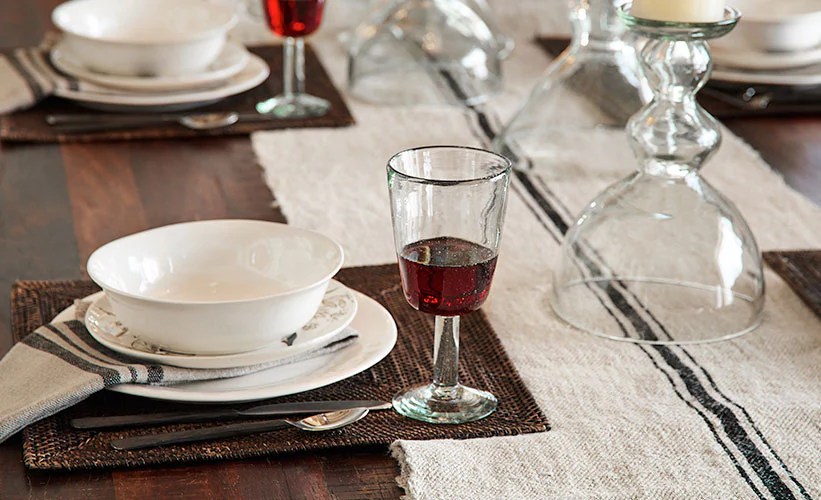
5 Ways To Decorate A Table With Runner Pottery Barn

13 Modern Ways To Use Table Runners Urquid Linen

How To Use Table Runners 8 Helpful Tips Hunker Dinner Party Settings Outdoor Dining

5 Ways To Use A Table Runner Stylemutt Home

How To Make A Table Runner

Table Runners Add Color Style To Rooms Supreme Accents

How To Decorate With Table Runners
:max_bytes(150000):strip_icc()/LaurkenKendall-75139881cf104a3ebbdd3a0c5c3efa8a.jpeg?strip=all)
25 Eye Catching Table Runner Ideas For Your Wedding Reception
Related Posts


